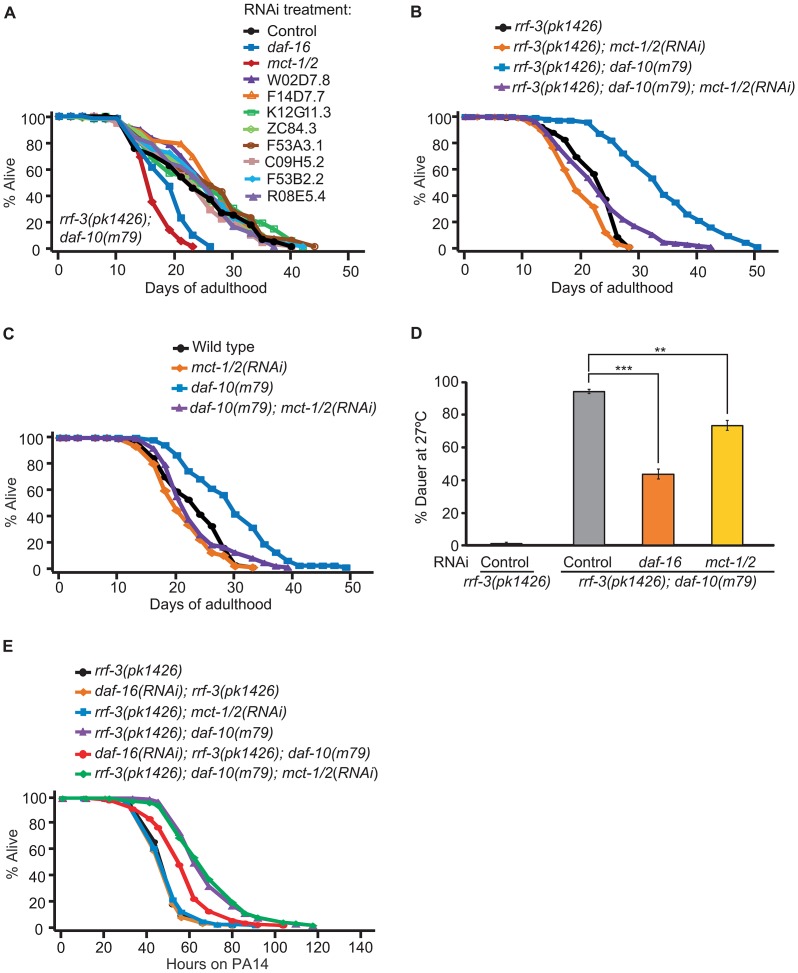Figure 5. mct-1/2 is required for the long lifespan and dauer formation of daf-10 mutants.
A. RNAi bacteria for 9 of the 14 up-regulated genes were obtained from the C. elegans RNAi libraries [65], [66]. rrf-3(pk1426); daf-10(m79) animals were treated with RNAi targeting the nine genes, control RNAi (containing empty vector) or daf-16 RNAi bacteria. The latter, as shown previously [3], shortened lifespan of the sensory mutant animals and served as a positive control. RNAi against mct-1/2 significantly decreased the long lifespan of rrf-3(pk1426); daf-10(m79) animals. B. RNAi targeting mct-1/2 almost completely suppressed the longevity of rrf-3(pk1426); daf-10(m79) animals, while having little effect on that of rrf-3(pk1426) animals. C. mct-1/2 was knocked down by RNAi in wild-type and daf-10(m79) animals. When grown on mct-1/2 RNAi, the life-extending effect of daf-10(m79) mutations was significantly reduced. D. mct-1/2 RNAi partially but significantly suppressed the constitutive dauer formation phenotype of daf-10(m79) mutants at 27°C. daf-16 RNAi was used as a positive control. Error bars represent s.e.m. (** p<0.01, *** p<0.001, Student's t-test). E. mct-1/2 RNAi did not affect the PA14 resistance due to daf-10(m79) mutations in the big lawn assay, whereas daf-16 RNAi did. The RNAi-hypersensitive rrf-3(pk1426) mutant background was used to potentiate the RNAi effect. A summary of the data presented in this figure is included in Tables S1B and S2.

